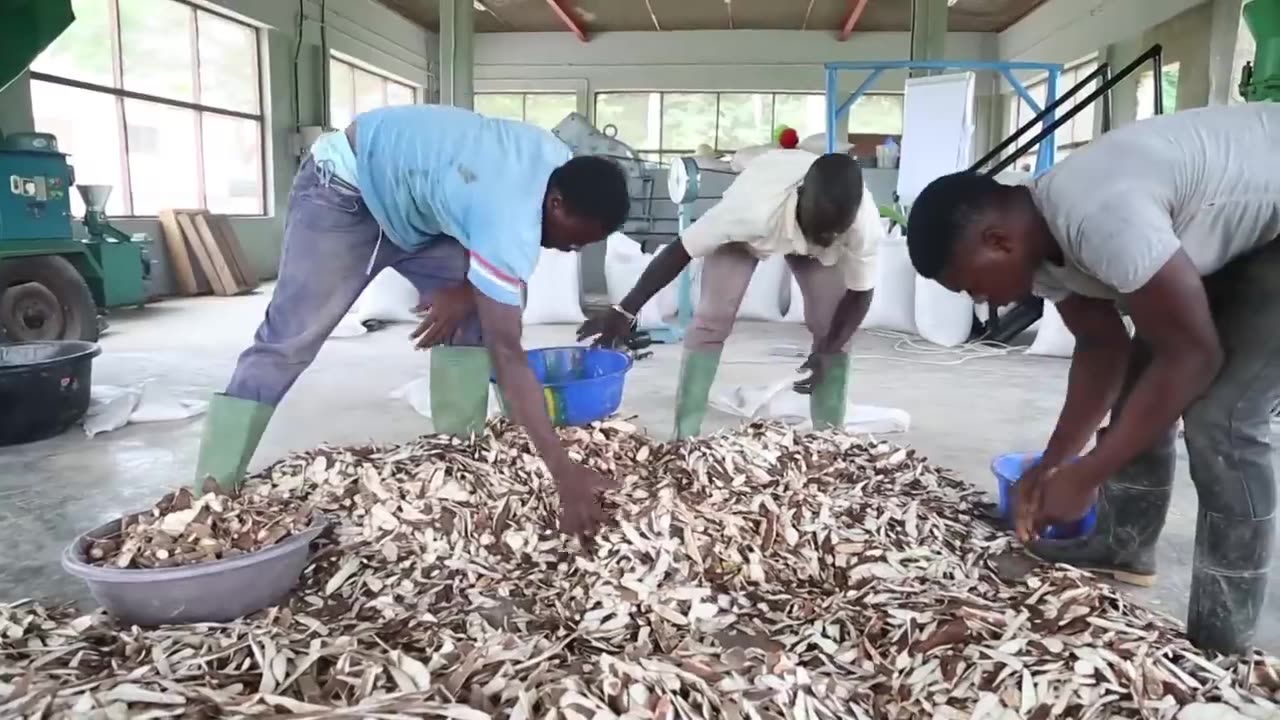Premium Only Content

Transforming cassava peels into animal feed
Transforming cassava peels into animal feed is an innovative and sustainable approach that addresses both environmental and economic challenges. Cassava is a widely cultivated root crop, and its peels are a byproduct generated during processing or consumption. Traditionally, these peels are considered agricultural waste and pose disposal challenges.
However, researchers and farmers have discovered that cassava peels can be transformed into nutritious animal feed, offering a valuable solution for utilizing this resource. The process involves treating and processing the peels to enhance their nutritional value and make them suitable for animal consumption.
The transformation typically includes several steps. First, the peels are thoroughly washed to remove dirt and contaminants. Next, they undergo a drying process to reduce moisture content and enhance their shelf life. This can be achieved through sun drying or using mechanical dryers, depending on the available resources.
After drying, the cassava peels are often milled or ground into smaller particles, making them easier for animals to digest. This step also helps to improve the overall texture of the feed. The resulting product can then be mixed with other ingredients such as grains, vitamins, minerals, and protein sources to create a well-balanced animal feed.
Cassava peels are rich in carbohydrates and fiber, making them particularly suitable for certain livestock animals such as pigs, poultry, and ruminants. The feed derived from cassava peels can provide an affordable and sustainable alternative to conventional feeds, contributing to the reduction of production costs for farmers.
Moreover, the utilization of cassava peels as animal feed has environmental benefits. By converting the peels into a valuable resource, it reduces waste generation and potential environmental pollution that could occur during improper disposal.
Overall, transforming cassava peels into animal feed offers a dual advantage of reducing waste and providing a cost-effective and nutritious feed source for livestock. This sustainable practice can contribute to improved animal nutrition, reduced environmental impact, and increased economic viability for farmers in regions where cassava is cultivated.
-
 2:12:07
2:12:07
Side Scrollers Podcast
17 hours agoCULTURE SHIFT CAUSES MELTDOWNS + MASSIVE CENSORSHIP EFFORTS RAMP UP | SIDE SCROLLERS LIVE
9.08K5 -
 11:25
11:25
Nikko Ortiz
1 day agoMost Painful Fails
42.5K26 -
 43:55
43:55
pewculture
6 days ago $2.05 earnedIf the Purge was real, this is what we'd do... - EP#24
7.29K4 -
 8:14
8:14
MattMorseTV
1 day ago $9.52 earnedTrump just DROPPED the HAMMER.
53.5K60 -
 LIVE
LIVE
Lofi Girl
2 years agoSynthwave Radio 🌌 - beats to chill/game to
205 watching -
 22:39
22:39
BlabberingCollector
8 hours agoThe Alphabet Mafia Is Mad At JK Rowling AGAIN
16K3 -
 5:30:52
5:30:52
SpartakusLIVE
9 hours agoDuos w/ @GloryJean || #1 Masculine Muscle MASS sears YOUR retinas with MIND BENDING content
223K3 -
 3:05:49
3:05:49
TimcastIRL
9 hours agoNew DOCS PROVE Obama Hillary CONSPIRACY To SABOTAGE Trump Admin | Timcast IRL
225K118 -
 2:29:36
2:29:36
Laura Loomer
9 hours agoEP136: YOU'RE FIRED! White House Vetting Crisis Continues
63K39 -
 8:07
8:07
MattMorseTV
9 hours ago $6.71 earnedTrump just LOWERED PRICES by 75 PERCENT.
38.2K39